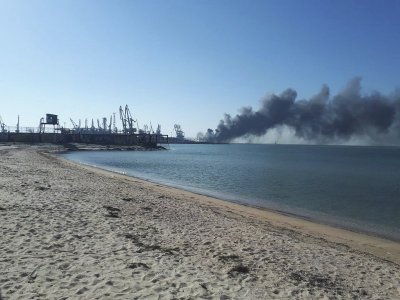On a recent reporting trip to cover
Russia's invasion of Ukraine,
Time reporter Simon Shuster visited an air base on the Polish side of the Ukrainian-Polish border. Watching as U.S. planes brought in loads of weapons for Ukraine, Shuster felt like he was standing on the brink of something massive.
"What you see is basically a constant cycle of these enormous C-17 military cargo planes landing, unloading their cargo, taking off again, day and night," he says. "Standing there, there is a bit of a feeling in the pit of your stomach that we are on the edge of a really era-defining war. We're already in it."
Born in Moscow, Shuster immigrated with his family to the U.S. in 1989
. He reported on the EU and the former Soviet Union for
Time from 2013 to 2020 (he's now based in New York for
Time) and has interviewed Ukrainian President
Volodymyr Zelenskyy three times. Shuster describes Zelenskyy's wartime leadership as a "lesson in courage."
Clearly, Russia was planning this war for a long time. Putin had this in mind, at least as a possibility for a long time. And what he did in imprisoning Navalny and banning his political organization was he essentially destroyed the main group, the main political leader who could mount an anti-war movement in Russia. He did that well before he launched this invasion. And we can't say for sure whether the two events were connected, but with hindsight, it does look like Putin was preparing the political field in Russia to prevent any kind of organized anti-war movement from arising once the invasion was underway.



